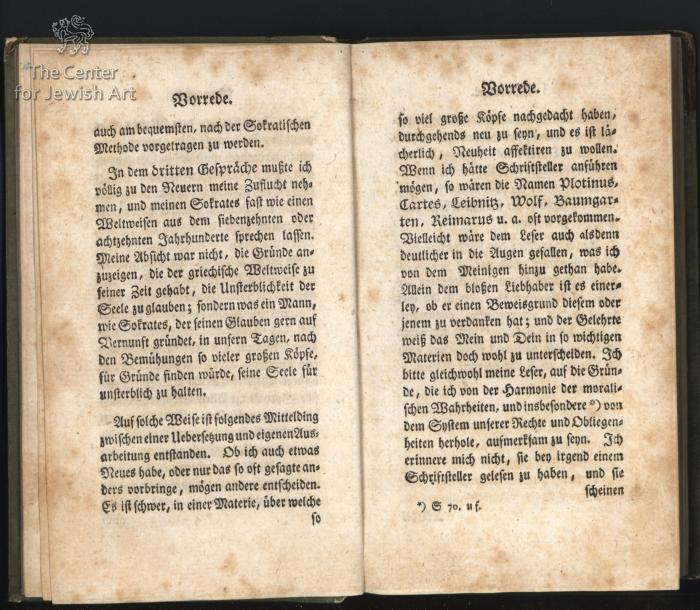Obj. ID: 40581 Phädon by Moses Mendelssohn, Frankfurt am Main, 1776

sub-set tree:
This text was prepared by William Gross:
Phaedon oder über die Unsterblichkeit der Seele, in drey Gesprächen, [Phaedon, or on the immortality of the soul], Moses Mendelssohn. Berlin and Szczecin, 1767. German. 1st ed.
First edition of the book by the philosopher Moses Mendelssohn (1729-1786), which was translated into many languages. The book, titled after Plato’s dialogue and written as a dialogue between the Greek philosopher Socrates and his students, brings evidence for the immortality of the soul and deals with eternity and immortality.
Calibri (Body)The main philosophical work of Moses Mendelssohn, the first Jewish philosopher of the modern period. Modeled on Plato’s dialogue of the same name, the Phaedon addresses the immortality of the soul. It was one of the most popular books of its time, and was republished many times in many languages, both before and after Mendelssohn’s death.
Engraved portrait of Socrates precedingthe title page.
[1] Plate - engraving; [11], 309, [1] pp







